If you’ve spent even 10 minutes browsing the Internet for a new pillow, you’ve probably noticed there are a lot to choose from. So… how are you supposed to know which pillow is the right one for you? Well, allow me to take you through my personal process of picking the pillow that’s going to keep your posture healthy, but also satisfy all your unique sleep needs.
Some of you may remember our review of the Leesa Hybrid pillow, but if not, don’t worry! For this demonstration, we’ll be using the Leesa Hybrid (alongside other sleep accessories) so that you can get a better sense of which type of pillow is perfect for you. Let’s find out how to choose the right pillow!
Leesa Hybrid Pillow
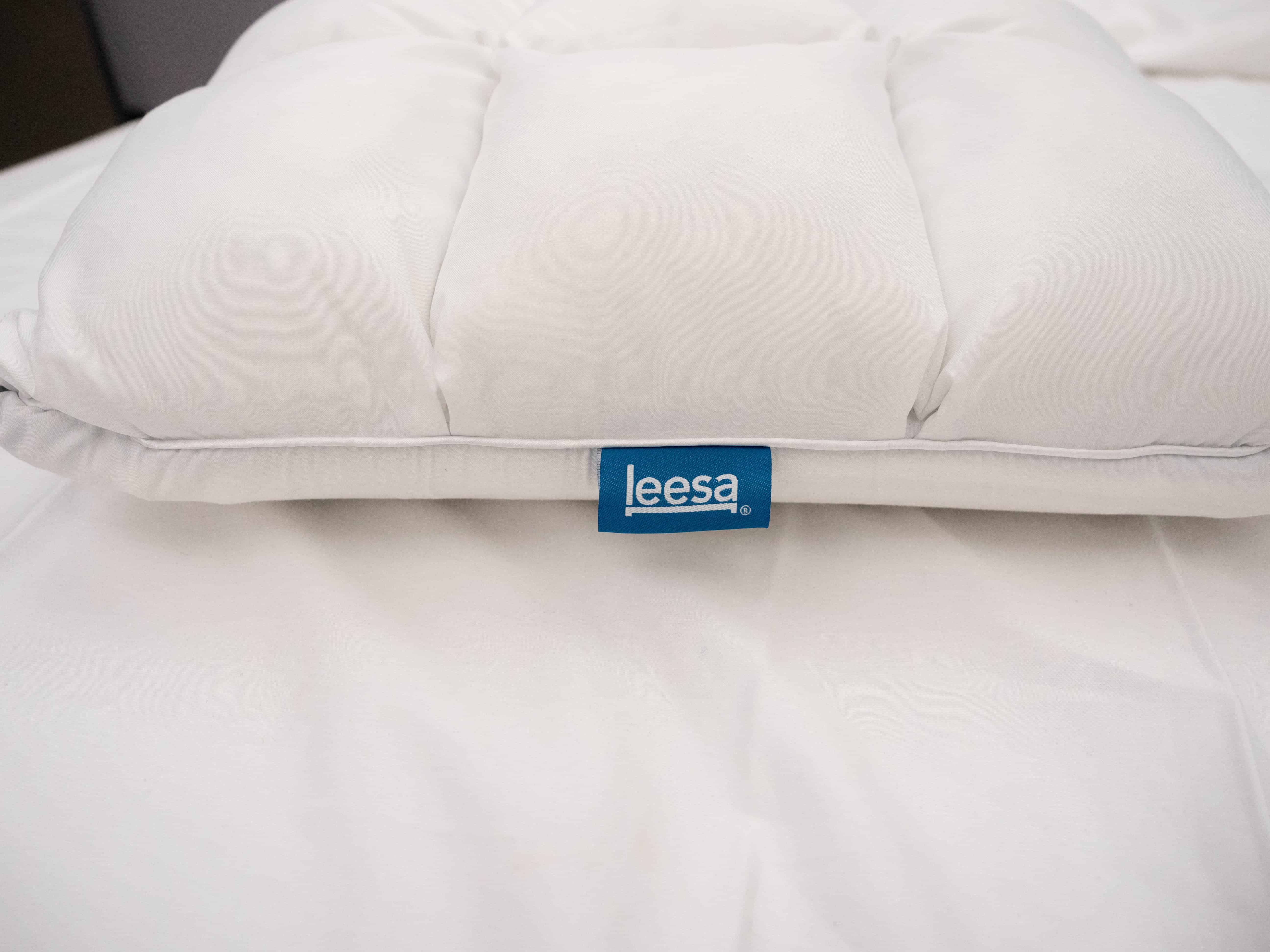
As its name suggests, this sleep accessory features a multilayered construction that looks and feels totally different from its pillow-predecessor.
Sleepopolis Score
3.90 / 5
How Do I Pick The Perfect Pillow?
Okay, let’s start from square one. At the end of the day, your pillow’s most important job is to support you in your go-to sleeping position, all night long. And when I say, “support,” I don’t just mean that it feels soft and cozy. The right pillow should keep your head, neck, and spine, all in neutral alignment, and support the natural curvature of your spine. Keeping a neutral spine not only alleviates neck pain, it also relieves pressure throughout your entire body.
Pro Tip: If you’re not exactly sure how to tell if your spine is in neutral alignment, check to make sure your ears are in line with your shoulders, and your chin is in line with your sternum.
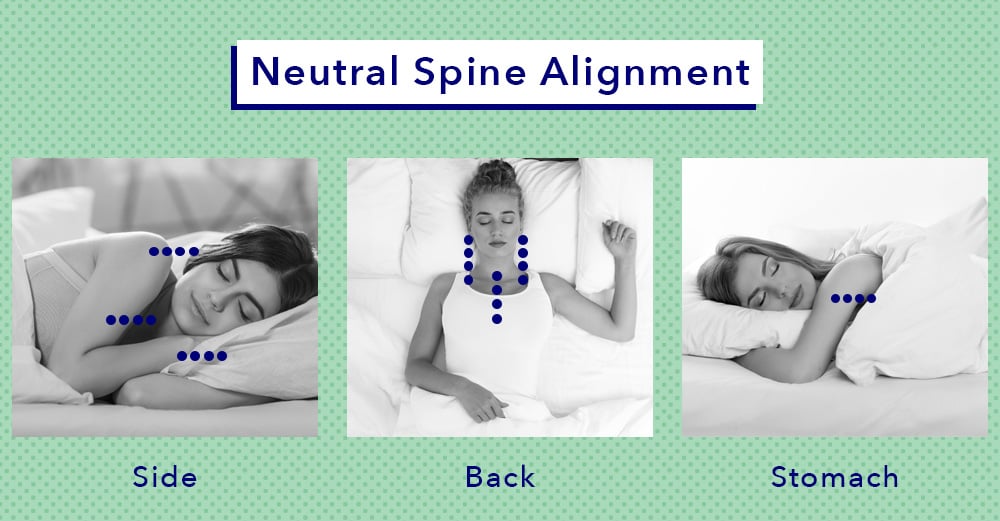
Now, here’s the tricky part: each sleeping position requires a different type of pillow in order to maintain healthy posture. But before I tell you exactly what each style of sleeper should look for, don’t forget about the fun part of pillow shopping! Once you’ve covered your body’s needs, and you’ve found a pillow that supports a neutral spine, you can dive into all the little details that satisfy your wants. There are, after all, hundreds of pillows out there, so you might as well find the one that’s perfectly suited to you.
You see, your sleeping position is just one reflection of your slumber habits, and there’s a lot more to consider when you’re on the hunt for your perfect pillow. For example, hot sleepers, memory foam fans, eco-friendly folks, and latex lovers are all likely to want specific types of pillows in order to accommodate their personal preferences. Remember: your pillow should always support a healthy posture, but it should also be compatible with your whole self.
That said, I’m going to mix-n-match some of these “wants” with different sleep styles. This way, you can find out exactly how to keep a neutral spine in each sleeping position, and then pick and choose which special features you’d like your pillow to have!
Choosing The Right Pillow for Back Sleepers
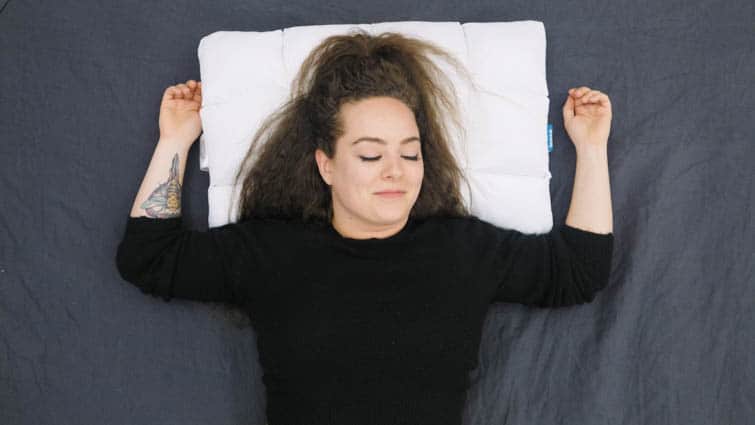
Needs
In order to maintain healthy posture, back sleepers need what I refer to as a “happy medium pillow,” meaning it’s got a medium loft, and a medium firmness. Additionally, back sleepers might find that pillows filled with materials that conform to pressure (like memory foam, for example), are particularly beneficial. To check out the wide range of available options, take a look at our list of the best pillows for back sleepers.
You might now be wondering, “But why do back sleepers need a pillow with medium loft and firmness?” Well, I’m glad you asked. Let’s take a closer look:
- Medium Loft – A medium loft is going to help relieve pressure in your neck and shoulders by providing a nice, cushy buffer between you and your mattress. If your pillow is too lofty, your head will be craned upwards (ouch, my neck!). If it’s not lofty enough, you’re pretty much lying flat on your mattress (well this isn’t comfortable.)
- Medium Firmness – A medium firmness will keep your head supported enough to be aligned with the spine, and ensure that the pillow won’t flatten over the course of the night. If your pillow is too soft, it’s likely to lose its shape under the weight of your head.
- Conform to Pressure – Materials designed to tightly conform to pressure can serve to keep the head feeling comfortably cradled, and held in neutral alignment with the neck. Additionally, pillows that feature a tufted top (like we see in the Leesa hybrid pillow) are going to provide some extra cushion upon which you can rest your temples (many back sleepers sleep with their head tilted to one side).
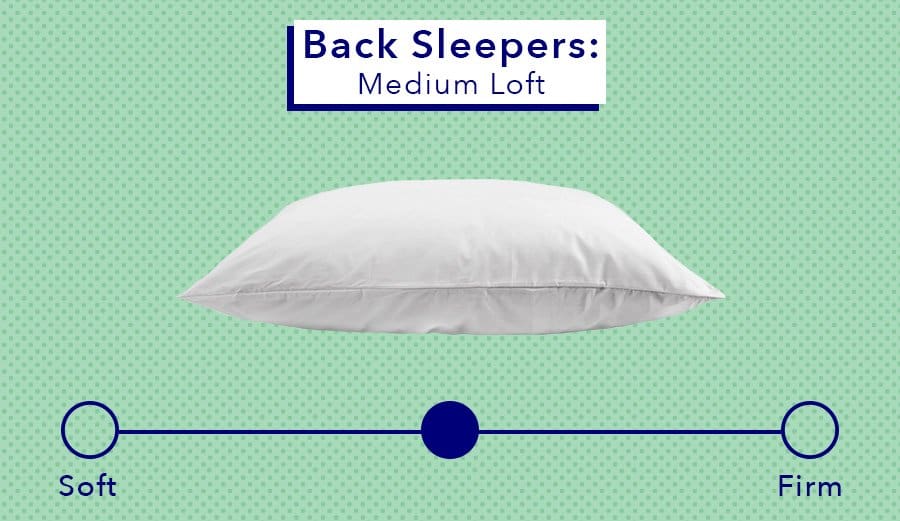
Now that we know more about the ideal construction of a back sleeper pillow, let’s take a look at some special features that might ease your journey into dreamland. Remember, these features are not mandatory (and they are not specific to back sleeping), but the more you know about the world of sleep accessories, the better equipped you’ll be to find the perfect fit.
Wants
- Customizable Support – Bedding brands are increasingly designing pillows that sleepers can customize to meet their specific needs. For example, the Leesa Hybrid pillow features a removable middle insert, which allows you to experiment with loft and firmness. Additionally, many pillows offer adjustable fills, meaning you can unzip the cover fabric and manipulate the internal stuffing until you’ve found the feel and support that works best for your body. This is particularly helpful for combination sleepers, or folks who are still figuring out what their perfect sleep style is.
- Cooling Qualities – Hot sleepers should look for pillows with cooling properties. The Leesa Hybrid, for example, features a cooling gel pad on one side of the pillow, keeping that side chilly all night. Meanwhile, sleepers who want their whole pillow to feel icy-crisp should aim for pillows with cool yarn or phase change material woven into the fabric. Phase change material, in particular, is designed to make your pillow feel like it’s been refrigerated — it’s very cool to the touch.
- Bouncy Support – Another thing to think about is the kind of support you want from your pillow. Some folks don’t love a slow sink into their pillow, and might feel sort of trapped by body-conforming foam. So, if you prefer a lighter feel and a bouncy response to pressure, aim for pillows filled with Dunlop or Talalay latex. These materials provide buoyant, springy support.
By now you must be thinking, “Wow, I didn’t know my pillow could do all that!” Well, keep reading because side sleepers are up next.
Choosing The Right Pillow For Side Sleepers
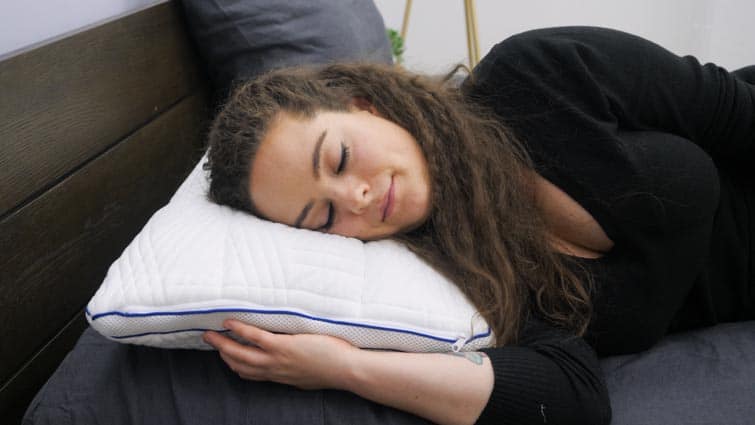
Needs
To keep a neutral spine and healthy posture, side sleepers need a pillow with a high loft, and firmer support. Side sleepers might also find that fluffable materials like Kapok, or shapeable materials like down, are particularly useful for the lateral position. Here’s why:
- High Loft – Most importantly, a pillow with a taller profile is going to prop your head up so that it’s in neutral alignment with your spine. Additionally, a lofty pillow will relieve pressure in your shoulder, and make sure that it’s not bearing the brunt of your body’s weight. If you ever feel like your shoulder is deeply digging into your mattress, your pillow might not be lofty enough.
- Firm Support – Pillows with a medium firm or firm level of support will serve to keep your head and neck in line with your spine throughout the night. If your pillow is too soft, your head will gradually sink down over the course of your 40 winks, throwing your spine out of neutral alignment (hello, stiff neck).
- Fluffy and Shapeable – Firmer pillows can take some getting used to, so I suggest searching for fluffable materials like Kapok, down, or down-alternatives. These materials are pretty soft on their own, so make sure your pillow is amply stuffed, and the loft is high. But finding a pillow that can be fluffed into a higher loft is often beneficial for side sleepers with broader shoulders. Also, pillows that are easily shaped allow you to reach one arm beneath the pillow in a cozy embrace, which is a go-to move for many side sleepers.
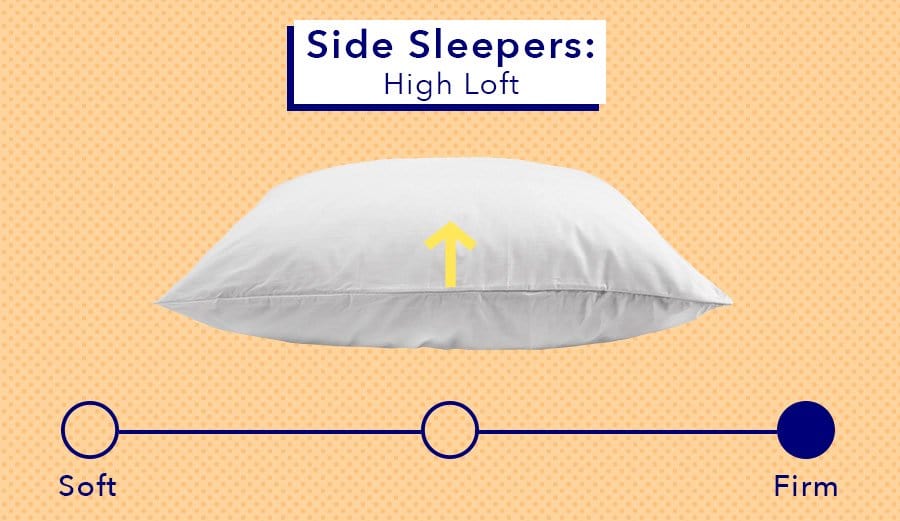
Now, if you want to check out a wide range of pillow options, check out my roundup of the best pillows for side sleepers. In the meantime, let’s dive into some more specific sleep accessory desires.
Wants
- Moisture-Wicking – Just because a pillow is designed to be cooling doesn’t necessarily mean it’s designed to be moisture-wicking, too. So, if you’re going through menopause or prone to night sweats, it’s best to aim for fabrics that are naturally absorbent. Polyester, Tencel, and bamboo are all great examples of materials that aren’t designed to feel cool to the touch… but will wick away moisture while you sleep.
- Natural and Organic – If you’ve got sensitive skin or are prone to breakouts, sticking with pillows made from all-natural materials might be the way to go. Organic cotton, cellulosic fibers, and natural latex are all good options for sleepers looking for organic, hypoallergenic materials. And remember, you don’t have to choose between the cover fabric and the internal fill. There are many bedding brands that exclusively use natural materials to craft its sleep accessories.
- Breathable Foam – There’s a reason memory foam is so popular — many sleepers can’t get enough of that deep sink and slow response to pressure. However, what sleepers don’t always love about memory foam is that it tends to trap body heat. How do we remedy this? Aim for pillows filled with shredded memory foam rather than one solid piece of foam. The individual, popcorn-sized shreds are able to move freely within the pillow’s cover, allowing for much better breathability. This way, the pillow is dissipating your body’s heat, and you’re still enjoying that classic memory foam feel.
Now we know what back and side sleepers should look for in a pillow, but did you know that many sleepers switch back and forth between both of these positions? If you’re a combination back/side sleeper, be sure to check out my roundup of the best pillows for combo sleepers. But here’s a tip: combination sleepers should aim for pillows that feature adjustable fills. This way, you can personalize your pillow to accommodate the positions you sleep in the most.
Choosing The Right Pillow For Stomach Sleepers
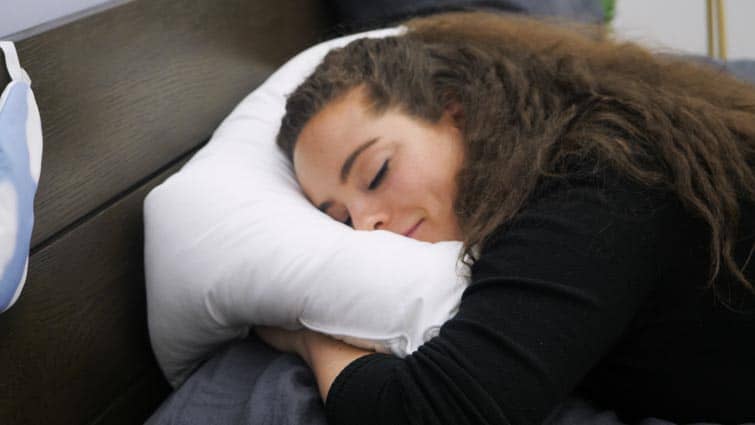
Needs
When it comes to stomach sleeping, finding the perfect pillow can be a little tricky. In fact, some experts suggest avoiding the prone position altogether, as it tends to position the upper cervical spine at end-range rotation or extension. Essentially, this means you’re at greater risk of straining your neck, and putting pressure on your lower back or abdomen. (1)
That said, I consulted physical therapist Dr. Keith Poorbaugh of the Sleepopolis Expert Network, and he told me that,“to mitigate the risk of stomach sleeping for articular pain in the shoulder or spine, the best option is to utilize proper pillow support.” And what is proper pillow support for stomach sleepers, exactly? Well, let’s check it out:
- Low Loft – In order to maintain neutral spine alignment, stomach sleepers need a pillow with low loft (two inches or shorter). If your pillow’s loft is even slightly too high, your head will be craned upwards, and your whole posture will be thrown out of whack. Remember: your pillow should support the natural C curve of your spine.
- Soft Support – Pillows with soft support are going to provide a cushy buffer between you and your mattress, but also ensure that your head is not too propped up. The firmer the pillow, the more likely it is for your neck to be lifted out of alignment with your spine (and that’s when the soreness sets in).
- Compressible Fill – Pillows filled with feathers or down alternatives are ideal for stomach sleepers. Why? Well, those materials are easily compressed into a super low loft. They are also very shapeable, which lends itself well to stomach sleepers who like to embrace the underside of the pillow rather than lie with their arms at their side. Finding a pillow with an adjustable fill is also a bonus, as you can decrease the loft as much as you need.
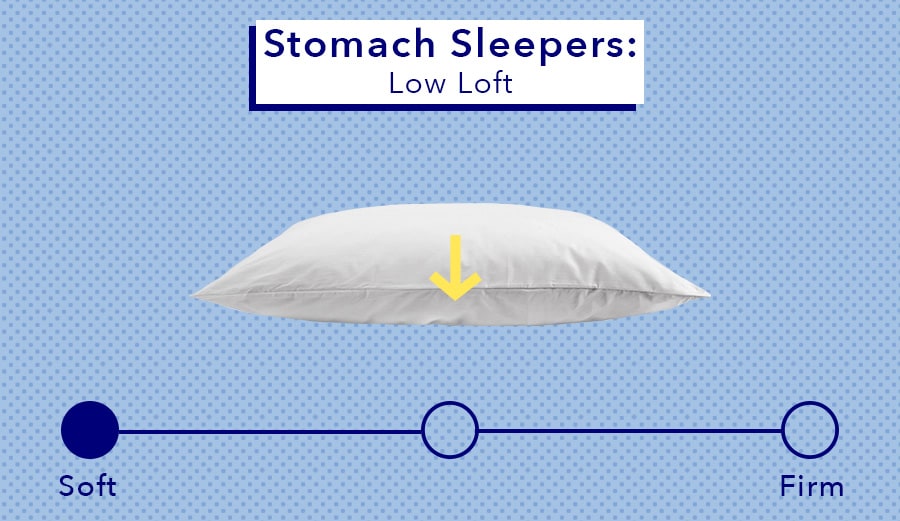
If you’re a stomach sleeper and you’re not sure you’re getting proper support, check out my roundup of the best pillows for stomach sleepers. But before you do that, let’s explore some other features you might want from your pillow.
Wants
- Pillowcase Priority – In order to support certain positions or body types, pillows can often come in obtuse shapes or feature deep contours. Unfortunately, this is not ideal for folks who want to dress their pillows with pillowcases. If you’ve got some silky, decorative shams you’ve been eager to use, aim for a pillow that advertises a “traditional” shape. Conversely, if you don’t want to bother with a pillowcase, go with cover fabrics that are known for their smooth, hypoallergenic nature (like Tencel or organic cotton).
- No Animal Products – Like I said, down is ideal for stomach sleepers because it’s shapeable, and easily compressed into a very low loft. However, not everybody wants to sleep on animal products. So what’s to be done? Well, down alternatives like poly gel fiber or micro-denier feel feathery like down, but no animals are disturbed in the making of those materials. This is also a bonus for folks who prioritize easy wash care, as down alternative pillows are usually machine washable (whereas foam typically has to be spot cleaned).
- Socially Conscious Brand – Want your pillow to stand for more than just good sleep? Look into bedding brands that are involved in social impact programs. Leesa, for example, donates mattresses and bedding to local housing shelters, and plants one tree for every mattress it sells. But they aren’t they aren’t the only ones. Do a little research, and you’ll find that many bedding brands are involved in charitable initiatives.
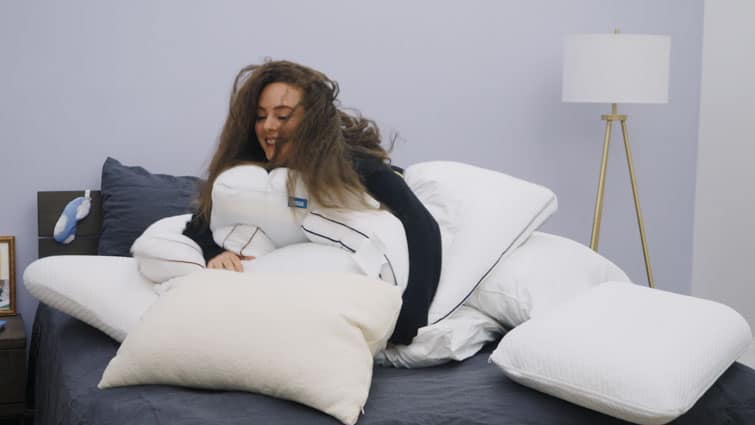
Final Thoughts
What can I say, folks? Yes, there is a seemingly endless ocean of pillows out there, but that can be a good thing (if you know what to look for). And hey, now you know what to look for! Just remember that keeping a healthy sleeping posture is the most important thing, and once you’ve done that, you can explore all the other things you want your pillow to do. So, go forth, sleep well, and if you ever feel lost in the wide world of bedding, Sleepopolis will be here to guide you.
FAQs
How can I be sure I am using the right pillow?
When choosing a pillow keep in mind the follow things: The right pillow should keep the head, neck, and spine, all in neutral alignment, and support the natural curvature of the spine.
What is the best type of pillow to use if you are a back sleeper?
Back sleepers should look for a “medium” pillow, meaning it’s got a medium loft and medium firmness. A pillow that is made from materials that conform to pressure would be best such as memory foam.
What is the best type of pillow for a side sleeper?
Side sleepers need pillows with a high loft and firmer support. Pillow made out of materials that can be fluffed like down are also recommended.
What is the best type of pillow for stomach sleepers?
Some experts suggest avoiding stomach sleeping altogether, as it tends to position the upper cervical spine at end-range rotation or extension. However, for stomach sleepers who can’t sleep any other way it is recommended you find a pillow with low loft, soft support and a compressible fill like feathers or down alternatives






























